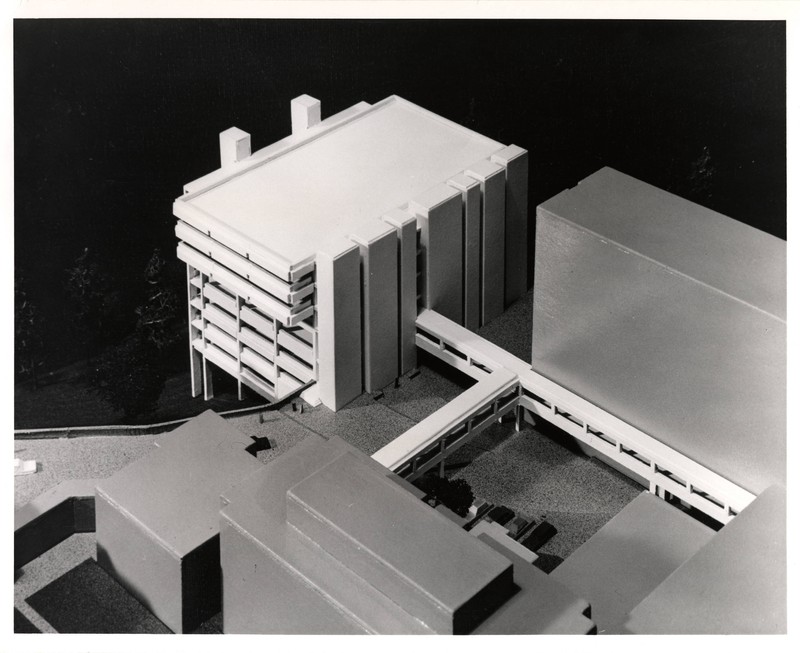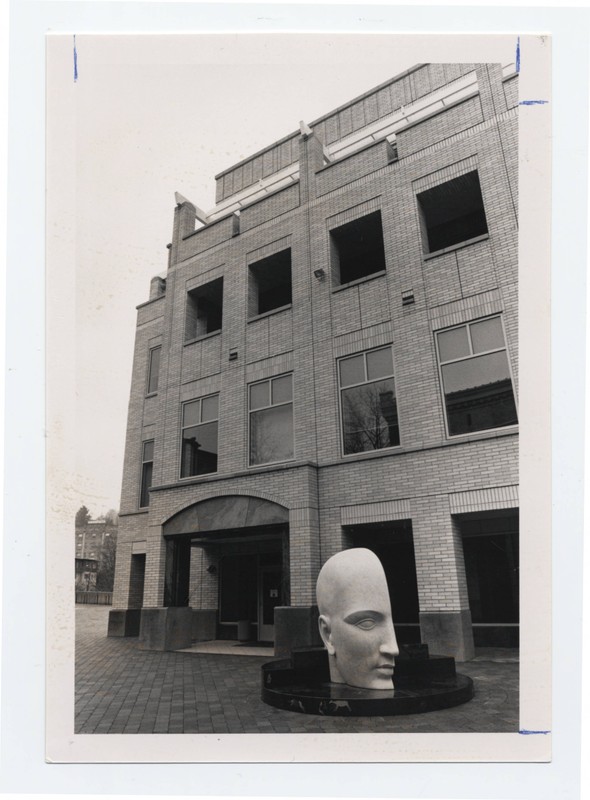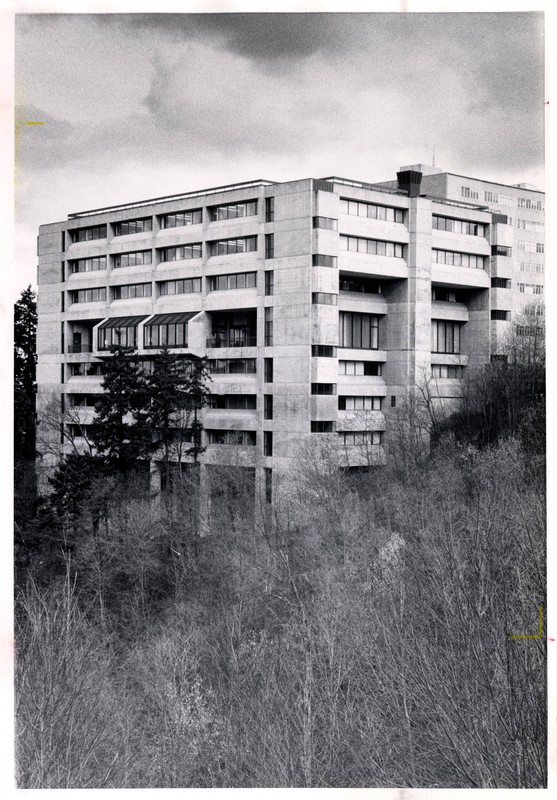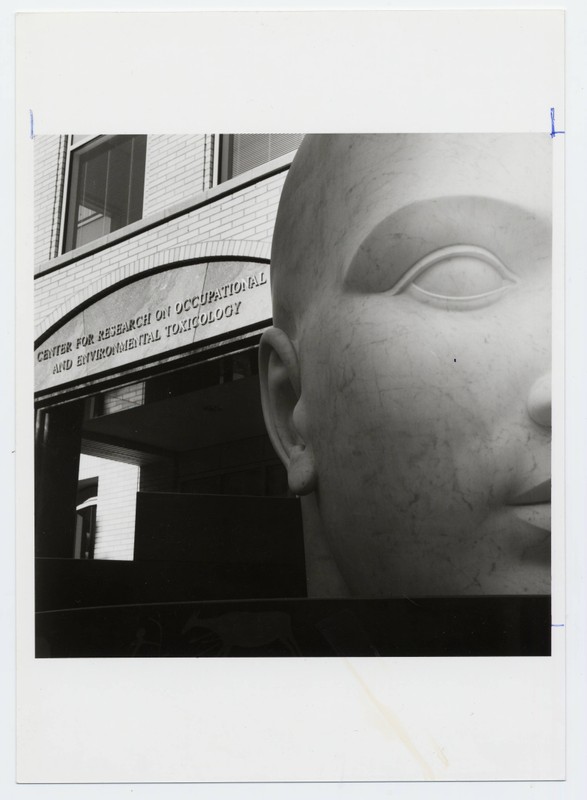Richard T. Jones Hall for Basic Medical Sciences, OHSU
Introduction
Text-to-speech Audio
Richard T. Jones Hall for Basic Medical Sciences, commonly referred to as simply “Richard Jones Hall,” is a dedicated research building with one of the most iconic Marquam Hill campus landmarks: a large, white head sculpture. The building was previously named the Basic Sciences Addition and included space dedicated to Center for Research on Occupational and Environmental Toxicity (now Oregon Institute of Occupational Health Sciences). It was renamed Richard T. Jones Hall, after former faculty member, Department of Biochemistry chair, and acting OHSU President (1977-78), Richard T. Jones, M.D., Ph.D, in 2008.
Images
Basic Science Building (now Richard T. Jones Hall), architectural model, 1967.

Center for Research on Occupational and Environmental Toxicology building with Vita Mensae sculpture in foreground, circa 1980s.

Basic Science Building (now Richard T. Jones Hall), undated.

View of Vita Mensae sculpture, circa 1990.

Backstory and Context
Text-to-speech Audio
By the 1960s, the School of Medicine required additional space for instruction and research purposes. In 1968, Dean Charles Holman, M.D., noted the need for the university to produce more physicians, nurses, and medical technologists to meet the needs of the state and region. Yet facilities were already overcrowded: the school was training 92 entering medical students in a space designed for 72. Much-needed lecture and laboratory facilities became available with the construction of the Basic Science Building.
Completed in 1971, the building is an eight-story (including basement), 262,617-square-foot structure. The building was designed by Campbell Yost Partners, now Yost Grube Hall, an architectural firm known for its exposed concrete styles. At one point, a blue awning surreptitiously labeled “Club Med” protected its south entrance.
Perhaps the most recognizable component of Richard T. Jones Hall is the courtyard sculpture, titled “Vita Mensae.” Created in 1993 by artist Larry Kirkland, the piece has become a campus landmark and popular point of rendezvous for faculty and students.
This building houses many research programs, institutes such as the Oregon Institute of Occupational Health Sciences, and labs, primarily focused on basic sciences.
Cite This Entry
Meg Langford on behalf of Oregon Health & Science University (OHSU) Library. "Richard T. Jones Hall for Basic Medical Sciences, OHSU." Clio: Your Guide to History. August 31, 2021. Accessed April 9, 2025. https://theclio.com/tour/2028/9
Sources
OHSU News. "OHSU Basic Science Building Named for Richard T. Jones." January 23, 2008. https://wayback.archive-it.org/8239/20210724213612/https://news.ohsu.edu/2008/01/23/ohsu-basic-science-building-named-for-richard-t-jones.
OHSU School of Medicine. "Reflections on Yesterday: OHSU School of Medicine History." 2004. https://doi.org/10.6083/g158bj09p.
Piasecki, Sara. "Vita Mensae." September 23, 2008. https://wayback.archive-it.org/8239/20191207044710/http://ohsu-hca.blogspot.com/2008/09/vita-mensae.html.
OHSU Digital Collections, https://doi.org/10.6083/M4736PCH
OHSU Digital Collections, https://doi.org/10.6083/M4V986KT
OHSU Digital Collections, https://doi.org/10.6083/M4XG9PMS
OHSU Digital Collections, https://doi.org/10.6083/M4ZW1JK3

